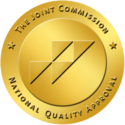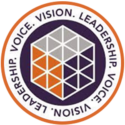DBT For Addiction
Dialectical behavior therapy, or DBT, is a form of psychotherapy. It is based on the principles of cognitive-behavioral therapy, or CBT. DBT focuses on emotional regulation, distress tolerance, and relationship building.
For many people, DBT for addiction treatment can be highly effective for long-term results. Eagle Creek Ranch Recovery in Nampa, Idaho provides various types of therapy to help people learn how to effectively manage and cope with their conditions. We believe in comprehensive treatment that addresses the needs of the entire person, so they can recover from their drug use and build a new life free of substance dependence.
What is Dialectical Behavior Therapy (DBT)?
Dialectical behavior therapy was developed in the late 1980s by psychologist Marsha M. Lineman. Initially, DBT was used to treat borderline personality disorder and suicidal thoughts. One of the goals of this therapy modality is to help people build the confidence and coping skills to handle stressful situations. Today, it’s often used in individual therapy, group therapy, family therapy, and can be used as a part of addiction treatment programs.
There are four parts to DBT:
- Mindfulness: Examining thoughts and feelings without judgment and feeling present and aware in your environment
- Interpersonal effectiveness: Learning to interact with others in any situation, such as being assertive when necessary and focusing on the problem at hand.
- Distress tolerance: Coping with emotions and stress and accepting reality
- Emotional regulation: Managing emotions by identifying feelings and obstacles to create positive thoughts and emotions
People with mental health conditions (such as borderline personality disorder) and intense emotional outbursts are at higher risk of self-medicating with drugs and/or alcohol abuse. This form of drug abuse can lead to addiction and dangerous behaviors. DBT for substance abuse helps improve self-image, coping, and communication skills, all of which are crucial for addiction treatment.
What is The Cognitive Triangle?
The cognitive triangle shows the relationship between thoughts, emotions, and behaviors. It shows how our thoughts change how we feel, which impacts our actions, thoughts, and so on. This cycle will continue until a person seeks help.
The cognitive triangle is a popular and effective way for therapists to treat addiction and co-occurring mental health disorders. Real change can begin when people understand the connection between thoughts, emotions, and behaviors.
Contact Eagle Creek Ranch
Recovery Today!
Why Wait? Find The Help You Need By Reaching Out To Us Today! Our Admissions Team Is Standing By.
Benefits of DBT for Substance Abuse
Substance abuse is a chronic disorder that takes over people’s thoughts, feelings, and behaviors. So many people who enter treatment are unsure if their thoughts or gut feelings are real. DBT helps recognize what is real and what is false by learning to read situations as they are and not through unrealistic perspectives. DBT programs and practices encourage people to think through intense negative emotions and practice emotional regulation. with time, it can even help with interpersonal effectiveness skills.
DBT also helps people recognize their responsibility for their behaviors while using drugs or alcohol. Once a person accepts responsibility, they can start rebuilding relationships and repairing the damage caused by addiction. People undergoing DBT treatment also learn distress tolerance techniques, which can help with decision-making regardless of personality disorders, alcohol addiction, or other disadvantageous situations.
The benefits of DBT for substance abuse include:
- Understanding behaviors and their consequences
- Learning to interact with others
- Accepting accountability for mistakes
- Building a support system to prevent relapse
- Discovering you are not alone in recovery and life
- Learning how to stay in the present moment
Many people struggling with substance abuse (such as opioid addiction) tend to think of situations as black and white. DBT for substance abuse can help people understand that there are many ways to view situations. In a clinical practice, DBT is tailored to each person’s needs and is used in group and individual therapy sessions.
The Goals Of DBT
People struggling with substance use disorder or mental illness can sometimes react strongly to outside stimuli. These reactions can be over-the-top or stronger than normal, which can cause issues. One main goal of DBT is to practice active emotion regulation, and treatment providers help people struggling with substance use disorder to hone these skills.
DBT teaches people the difference between extreme emotions and valid emotions. For example, being late to work might be very stressful. But in reality, it’s not worth the worry (or other negative consequences). Learning when strong emotions are valid or not can impact your life and relationships with others. It can help you avoid destructive coping mechanisms that may make problems worse.
One goal of DBT for substance abuse is to minimize the need for and desire for drugs and alcohol. Because nearly half of people abusing drugs or alcohol have co-occurring mental health problems, DBT can address both issues simultaneously and reduce relapse risk.
The structure and goals of DBT for substance abuse may change depending on the setting, but the characteristics stay the same and include:
- Acceptance and Change: DBT skills training teaches strategies to accept and tolerate life’s circumstances, emotions, and yourself. People develop the skills to make positive changes in behaviors and interactions with others.
- Behavioral Skills: People learn to analyze destructive and ineffective behaviors and replace them with positive, healthy behaviors.
- Cognitive Skills: Therapists help people recognize and change unhealthy thoughts and beliefs and change them into positive and effective ones.
- Collaboration Skills: DBT for substance abuse helps people learn to communicate and work with others as a team. It begins by collaborating with your treatment team.
- Coping skills: DBT helps people build healthy coping skills for stress management in any situation.
The most effective characteristic of DBT for substance abuse disorders is encouraging people to recognize their positive strengths and attributes and how to use them. They can learn to avoid substance misuse and other dysfunctional behaviors through self-awareness.
How Does Dialectical Behavior Therapy Work?

In individual DBT for substance abuse, the therapist first ensures the person is emotionally stable before proceeding with therapy. The therapist typically starts a DBT program by encouraging people with substance abuse disorders to talk about their issues to uncover past experiences still affecting them today. This helps get to the root of substance use issues.
When the emotions from past experiences start surfacing, the therapist teaches different ways to deal with emotions without using drugs or alcohol. Many people with addictions and mental health disorders perceive things negatively and not realistically. With help from the therapist, people start seeing situations clearly and choosing healthier behaviors and reactions.
The 4 Stages Of DBT
DBT has a series of four stages. In the beginning, a person works with a therapist to establish goals to achieve in each stage. The four stages are:
- Stage One: Acknowledging the chaos that substance abuse creates.
- Stage Two: Focuses on regulating emotions.
- Stage Three: Focuses on self-confidence, improving relationships, and setting life goals.
- Stage Four: Accepting self as a whole and complete person and having a positive mindset
Whether or not someone struggles with substance use disorders, DBT can help a person sharpen emotional regulation skills and develop a stronger sense of self. This therapy modality has also been used to help treat eating disorders, another condition where healing can also be bolstered by working on emotion regulation.
DBT Techniques for Substance Use Disorders
DBT for substance abuse is an evidence-based psychotherapy approach to treating substance use disorders and co-occurring mental health disorders. It is used in various settings, including individual and group therapy. People may also call their therapist for guidance when they are struggling in a situation.
How is DBT Helpful in Drug and Alcohol Addiction Recovery?
People struggling with addiction typically have difficulty finding happiness unless they use drugs or alcohol. Dialectical behavior therapy helps people recognize the behavior patterns that limit them.
DBT for substance abuse can give hope to many who struggle with addiction and co-occurring mental health disorders. Addiction strips people of their self-confidence and self-worth and leaves many feeling hopeless and helpless.
This type of therapy can provide hope by addressing thoughts, feelings, and behaviors uniquely. While not every person in addiction treatment needs DBT, it is helpful in addiction recovery because:
- Certain mental illnesses make people distrusting and unwilling to admit they are struggling mentally. These disorders may include borderline personality disorder and schizophrenia.
- The stigma around addiction can make it difficult for some to admit they need help. But, when people refuse to admit they have a problem, it is more challenging to treat them. However, DBT for substance abuse has a different approach and can help them understand they need help.
- Addiction recovery brings up a variety of emotions. People who anger easily, get overly defensive, or are resistant to change, find DBT for substance abuse helpful in their recovery journey. A cognitive triangle is an excellent tool for helping them understand how thoughts affect feelings and behaviors.
- Some people with addiction and co-occurring mental health disorders struggle with suicidal thoughts and self-harm. Traditional CBT requires logic and reasoning. For those with tendencies to self-harm, this can be difficult. DBT’s approach can help reframe their unhealthy and harmful thoughts.
People who struggle with multiple relapses despite the treatments may find success in DBT for substance abuse.
DBT Techniques For Substance Use Disorders
Substance Abuse Treatment
DBT for substance abuse is an evidence-based psychotherapy approach to treating substance use disorders and co-occurring mental health disorders. It is used in various settings, including individual and group therapy. People may also call their therapist for guidance when they are struggling in a situation.
Dialectical Behavior Therapy: Methods and Principles
Dialectical Behavior Therapy (DBT) has a set of principles or pillars of this therapy. They include:
- Biosocial theory: When a person who is emotionally sensitive lives in and interacts with an invalidating environment, emotional regulation patterns develop.
- Acceptance and validation: Validating experiences, thoughts, and emotions but not always approving of behaviors, and understanding while teaching how to change unhealthy thoughts and behaviors.
- Behavior change: Identify events preceding destructive behaviors with the intent to practice healthier responses.
- Emotional regulation: Identifying the emotion, putting a name on it, and changing the emotion with skills such as mindfulness
- Distress tolerance: Trouble dealing with a crisis, perception of events is faulty (cognitive distortions)
- Filtering
- Interpersonal effectiveness: Rebuilding relationships, communication skills, respect for self and others
- Mindfulness: The practice of living in the moment
- Catastrophizing
- Overgeneralization
- “Shoulds,” i.e. identifying self-criticism because of what one believes one should do or should have done
The principles of DBT can help everyone, whether they are struggling with addiction, mental health disorders, or just dealing with stress.
Dialectical Behavior Therapy: Skills and Tools
Dialectical Behavior Therapy for substance abuse teaches four skills to cope with emotional distress positively and productively. These four skills are often called the “active ingredients” of DBT.
In DBT for substance abuse, mindfulness is divided into “what” and “how” skills. “What skills teach people what they are focusing on, such as:
- The present
- Awareness in the present
- Emotions, thoughts, and sensations
- Separating thoughts from emotions and sensations
“How” skills teach people how to be mindful by:
- Balancing healthy thoughts and emotions
- Using radical acceptance to tolerate things about yourself as long as they are harmless
- Taking positive actions
- Regularly using mindfulness
- Overcoming sleeplessness, restlessness, and doubts that interfere with being mindful
Distress tolerance skills can help:
- Cause distractions to be calm enough to handle the emotion or situation
- Self-soothe and use your senses to feel calm
- Develop ways to improve the moment despite the struggle
- Weighing the pros and cons of coping mechanisms
Interpersonal effectiveness combines listening skills, social skills, and assertiveness training. The skills a person learns include:
- Learning how to ask for what you want and how to get it
- Learning to work through conflict in relationships
- Building self-respect
Emotional regulation skills include:
- Recognizing emotions
- Overcoming the challenges to emotions
- Reducing vulnerability
- Increasing positive emotions
- Being mindful of emotions without judgment
- Exposing emotions
- Solving problems in healthy ways
How to Find The Right Facility For Dialectical Behavior Therapy
The best way to find DBT for substance abuse is to talk to an addiction professional or treatment center. Many substance abuse treatment centers, including Eagle Creek Ranch, offer DBT as part of their evidence-based approach to recovery. If attending a treatment center is not an option, many therapists are trained in DBT.
Learn More About How DBT at Eagle Creek Ranch Can Help You Recover
If you or someone you love is struggling with substance abuse and traditional treatments aren’t working, addiction treatment such as Dialectical Behavior Therapy can help. Drug addiction can be tricky, and mental health treatment is sometimes necessary to ensure positive future results. Contact us today to find out how we can help you get on the road to recovery.

Clinical Director
Kendall Maloof is the clinical director at Eagle Creek Ranch Recovery. She is a licensed marriage and family therapist and has held multiple leadership roles before settling here at Eagle Creek. Kendall received her master’s degree in marriage and family therapy from the Chicago School of Professional Psychology in 2016. Her career in mental and behavioral health began in 2014 when she took up internships in both the nonprofit and for profit sectors. She interned at multiple reputable companies, such as The Living Success Center and 449 Recovery in California.
In 2019, Kendall became the clinical director of Sunsets Recovery for Woman, a dual diagnosis program in southern California. Kendall is a natural leader. She has an incredible ability to problem solve and stay calm in any situation. Kendall never fails to show up when she is needed, and her calm demeanor makes her team and clients feel at ease. Eagle Creek Ranch Recovery is proud to have Kendall as our clinical director.


